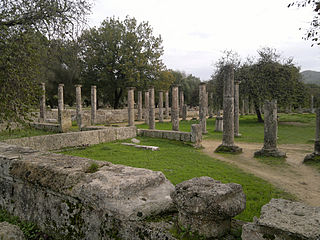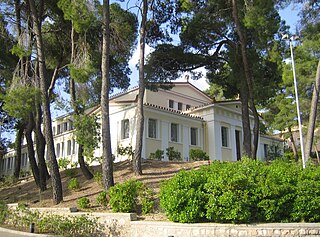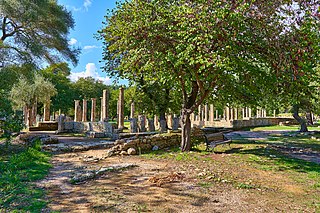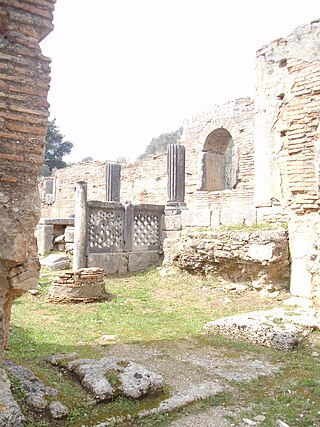Self-guided Sightseeing Tour #2 in Ancient Olympia, Greece
Legend
Guided Free Walking Tours
Book free guided walking tours in Ancient Olympia.
Guided Sightseeing Tours
Book guided sightseeing tours and activities in Ancient Olympia.
Tour Facts
1.3 km
45 m
Experience Ancient Olympia in Greece in a whole new way with our free self-guided sightseeing tour. This site not only offers you practical information and insider tips, but also a rich variety of activities and sights you shouldn't miss. Whether you love art and culture, want to explore historical sites or simply want to experience the vibrant atmosphere of a lively city - you'll find everything you need for your personal adventure here.
Individual Sights in Ancient OlympiaSight 1: Museum of the History of the Olympic Games in Antiquity
The Museum of the History of the Olympic Games is located in Ancient Olympia. It hosts objects through which the history of the Olympic Games of Antiquity is presented. The Museum is supervised by the relevant VII Ephorate of Prehistoric and Classical Antiquities.
Wikipedia: Μουσείο της Ιστορίας των Ολυμπιακών Αγώνων (EL), Website
Sight 2: Museum of the History of the Exacavations in Olympia
The building of the Museum of the History of the excavations in Olympia is the so-called Old Ephorate and was built in the early 20th century, possibly a little later than the neoclassical building of the Museum of the History of the Olympic Games. Building interventions and small additions were made in the 1950s.
Wikipedia: Μουσείο της Ιστορίας των Ανασκαφών της Ολυμπίας (EL)
Sight 3: Palaestra
The palaestra at Olympia is the ground or grounds in ancient Olympia where πάλη, Doric πάλα, "wrestling," was taught and performed for training purposes; i.e., "wrestling-school." Two other martial arts were taught there: Greek πυγμή (pygme), Latin pugnus, "fist, boxing," and Greek παγκράτιον, Latin pancration or pancratium, "any method," which was free-style, or hand-to-hand, including grappling, kicking, punching, or any unarmed method whatever, no holds barred. The latter was sometimes deadly, or disfiguring, which indicates that the arts were ephebic, or "soldier" training for prospective citizens of the city-state sponsoring the school, such as Elis, but here combined with prospective candidacy for contention in the games. Be that as it may, none of the games were conducted without rules, umpires, and judges, who did not hesitate to stop contests, fine contenders with in some cases amounts prohibiting future participation, or bar flagrant violators.
Sight 4: Greek Baths
The Greek Baths in ancient Olympia are the earliest baths in the sanctuary and they are situated on the west side, outside the sacred enclosure of the Altis, near the bank of the river Kladeos. They were constructed during the 5th century B.C. and continued to develop throughout their use. In the 2nd century A.D. they were used as the foundation for the construction of the Kladeos Baths. They are called Greek Baths in order to distinguish them from the baths of the Roman period at the same area.
Sight 5: Olympia

Olympia, officially Archaia Olympia, is a small town in Elis on the Peloponnese peninsula in Greece, famous for the nearby archaeological site of the same name. The site was a major Panhellenic religious sanctuary of ancient Greece, where the ancient Olympic Games were held every four years throughout Classical antiquity, from the 8th century BC to the 4th century AD. They were restored on a global basis in 1894 in honor of the ideal of peaceful international contention for excellence.
Share
How likely are you to recommend us?
Disclaimer Please be aware of your surroundings and do not enter private property. We are not liable for any damages that occur during the tours.
GPX-Download For navigation apps and GPS devices you can download the tour as a GPX file.


